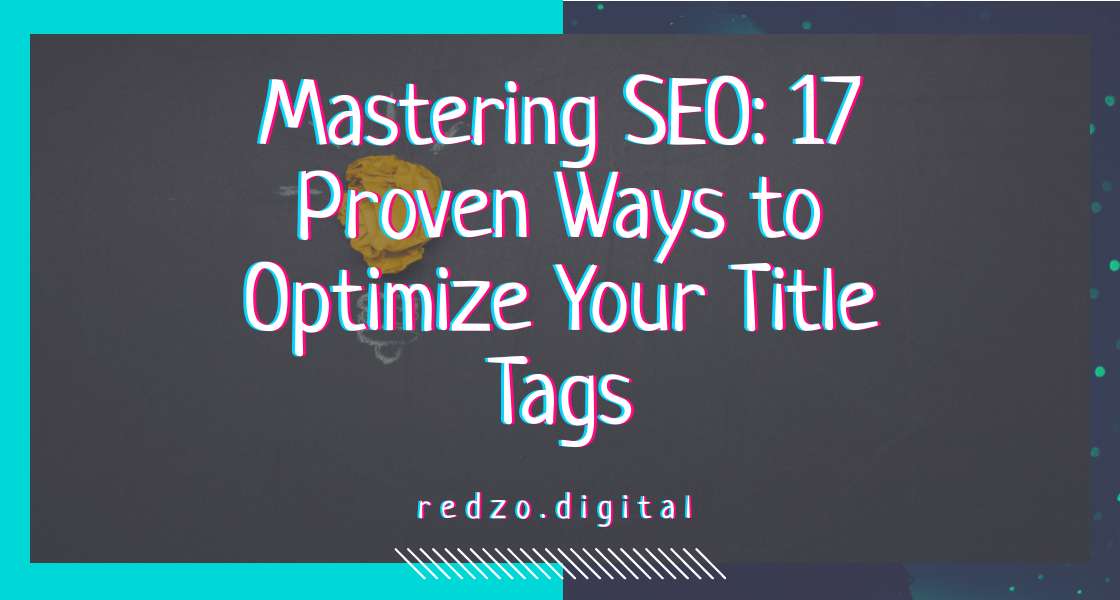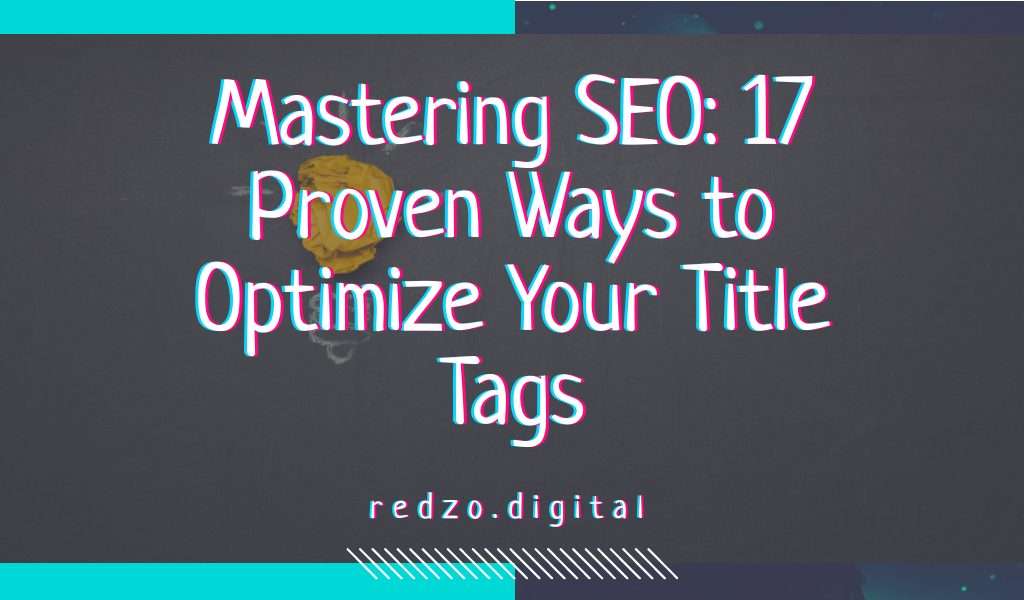One of the key elements that often gets overlooked is the optimization of title tags. This article will guide you through 17 effective ways to optimize your title tags for better rankings, Click-Through Rate (CTR), and social sharing.
- Focus on Content: No matter how well you optimize your title tag, if the page content is of low value, it won’t matter. Your page must satisfy the intent and please your users. As long as your content delivers on the promise of the title, you’ll be good to go.
- Front Load Your Primary Keyword: From a searcher’s intent perspective, it makes sense to have the keyword phrase front and center. Front loading doesn’t mean that your keyword phrase needs to be first in the title tag, but it should be towards the beginning.
- Write for Searchers, Not Search Engines: Place your keyword in the title tag, but avoid stuffing keywords. Google’s algorithms can identify synonyms and variations of your keywords, so you don’t need to jam keyword variations into your title tag.
- Use Shorter Titles: Research has found that shorter titles tend to perform better in Google. Try to stay below 60 characters, including spaces.
- Avoid Duplicating Page Titles: No two pages that you want to be indexed in Google should have the same title. Use tools like Screaming Frog SEO Spider to find duplicate page titles.
- Use Title Modifiers: Using title modifiers is one of the best ways to drive long-tail traffic without much effort. Some simple title modifiers you can use are “top”, “best”, or even the year.
- Emphasize Freshness: People love new things. Emphasizing freshness in your title works really well. You can incorporate freshness into your title tags by using the word “new”, using the year, or even using new data.
- Use the HNW Strategy: Simply use one of the following words in your title tag: how, what, why, when, where, or who.
- Use Numbers: According to a study by Conductor, 36% of respondents preferred headlines that included numbers.
- Use Clickbait Tactics Sparingly: Clickbait headlines work because they engage our natural human curiosity. However, overuse could definitely hurt your brand’s perceived value.
- Be the Most Comprehensive: People want assurance that they aren’t missing out on any important information. That’s why “ultimate guides” tend to work really well.
- Emphasize Speed or Time Savings: One of the most powerful benefits to emphasize is saving time. Use words like “fast”, “quick”, or “simple”.
- Break the Pattern: Pattern interrupts are common in video content, but there are ways to break the patterns in the SERPs as well. Some of the best methods are to use brackets, curly brackets, parentheses, equal signs, plus signs, or even minus signs.
- Use Chat GPT to Generate Title Variations: Chat GPT can generate a variety of SEO title ideas based on a simple prompt.
- Score Your SEO Title Ideas: Once you have the title tag ideas, you can use Chat GPT and Google Bard to score them based on clickability and relevance to the main keyword.
- Launch a Title Tag Test: Google Search Console shows you CTR data for your organic keywords. If you’re ranking well, but your CTR is subpar, then you should test changing your title.
- Be Realistic: Placing your keyword in your title tag is a micro ranking factor. It’s a bare minimum theme for ranking well.
In conclusion, optimizing your title tags is a crucial aspect of SEO. By implementing these strategies, you can significantly improve your website’s visibility, CTR, and overall SEO performance. Remember, SEO is a marathon, not a sprint. So, keep testing, keep learning, and keep optimizing.

